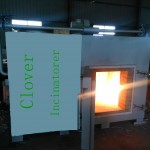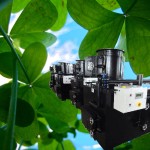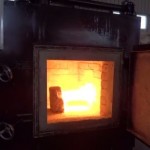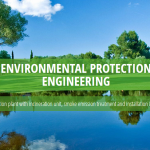use in the hospital for burning hazardous waste and chimicals, minimum Capacity 300 per hour. I will be reselling to my client?. Below is the information I was given and nothing else. The hospital incinerator for use in the clinical waste as required by international environmental management. Minimum 300 Kg capacity/hr, Fuel fired, refractory lined, chimney and sampling prot. Minimum temperature of 1100 degree Celsiu.the incinerator machine for burn 500kg per hour. project about burn medical waste of the hospitals.Just want to price of you various types of Medical Rubbish Incinerators.need all information on 300 kg per hour unit. availability. operational costs using diesel (other).the waste is Human Tissues. And we have 10 kg per day; we need incinerator for medical waste.Burn Capacity: 50kgs per hour (Average capacity according to Medical Waste).please forward information about pricing on all of you pet crematory models.Regarding Gas Incinerator, Please note that Fuel for the Incinerator
will be Gas. As gas is chip in our country.
Author Archives: animal-incinerator
burning hazardous waste and chimicals incinerators
3 types of incinerators, which are 10Kgs, 20Kgs and 30Kgs for our Tawfiq Hospital use in Malindi, Kenya. we are an
environmental consulting firm as I’ve mentioned previously, we have already contracted with a French company specialized in
the sale of solid waste incinerators (ATI) and we bought a crematorium for the disposal of solid waste, including $ 180
thousand dollars, and now we want to get into the business of selling waste incinerators animal, and since it does not have an
agent in Saudi Arabia. The three models you have indicated are based on 24 hour operation. Could you please make suitable
recommendations for 8-10 hour shift each day (including cooling time)? I assume we will need bigger capacity incinerators for
each of the three requirements.I am interested to know more detailed specifications and prices for your SYC-20 incinerator. I
am in the market for a small and easy-to-operate incinerator, however have little to no experience with such items.
installation and construction of SOLID WASTE
MANAGEMENT COMPLEX , for that purpose we need Sixteen (16) ton/day (7,538 kg/day) Capacity Incinerator System.1.5 ton garbage
per day,
required number of units -10 to 25 numbers
Installing different type of waste Management systems preferably Incineration and others for the state Jammu & Kashmir India
manufacturer and exporter of various Incinerator and other products.
Please be noted that we are a leading Bangladeshi business house dealing in various Medical, Surgical, Dental, Hospital
products, Plant and Machinery and so on
Most important is transformer, 220v motor, Temperature thermocouple, Blower of Primary Burner.
base on this portable incinerator,
1. the type of waste it can be use for (treatment).Hospital waste incinerators with reduced or carbon dioxide CIF khartom –
Sudan
medical waste incinerators models for hospitals of 100-300 bed and 100-1000bed,kindly send price quote of all the YD models
and mode of transaction /delivery to nigeria
incinerator is for use in the hospital for burning hazardous waste and chimicals, minimum Capacity 300 per hour.
The hospital incinerator for use in the clinical waste as required by international environmental management. Minimum 300 Kg
capacity/hr, Fuel fired, refractory lined, chimney and sampling prot. Minimum temperature of 1100 degree Celsius kindly quote
me best price for resale.The best price for resale for the between $7000 to $12000 Usd I already have quotations just need the
best price please. price should be CIF Johannesburg or Durban
incinerators at three facilities to process healthcare waste
a. 2.5 metric tons per day healthcare waste incinerator
b. 1.5 metric tons per day healthcare waste incinerator
c. 300 kg per day healthcare waste incinerator
Our preferred technology is double-chamber incineration, but if you recommend an alternative technology, that is acceptable as well.
We request information on the following for each of the above requirements:
1. Capital cost (delivered cost in Oman)
2. Operation and maintenance costs (per year)
3. Number of operators required
4. Product specifications (sizes, temperatures, residence time, cycle time etc)
5. Other auxiliary equipment that is required or recommended by you
medical waste PYROLYTIC INCINERATOR
TECHNICAL SPECIFICATIONS: PYROLYTIC INCINERATOR
| Parameter | Compliance |
| Type of Waste | To treat medical waste, categories A,B,C,D,E |
| Type of Incinerator | Pyrolytic |
| Nominal Burn rate | 50 t0 60 kg/ hr at 3500Kcal/Kg |
| Loading | Manual, Batch Load |
| De Ashing | Automatic or Manual batch de ashing |
| The incinerator must avoid the release of black smoke and fine dust during the loading | |
| Primary chamber capacity | 2-3 m³ |
| The insulation of the combustion chamber should be composed of refractory bricks, having a higher content of aluminium and insulates, | |
| The plate of combustion in carborundum avoiding the fixing of glass and slags | |
| Hours of operation /Day | >10 hrs |
| Max Operating Temperatures | 1400 °C |
| Normal Operating Temperatures(Primary) | >850 °C |
| Operating Temperature(Secondary) | >1100 °C |
| It should have digital temperatures regulator( Temperatures regulator in digital watch) | |
| Carbon content of ashes | <2% |
| The installation should be completely free from visible smoke as well as offensive odours | |
| Residence time in second chamber | 2 second minimum |
| The internal diameter of the Chimney | :Ø 400 |
| Height of stack | >8m |
| Burner operation | Automatic On/Off |
| Fuel | Diesel |
| Fuel consumption at raed capacity | >7kg waste /ltr |
| Electricity consumption | <2kW at rated capacity |
| Operating Voltage | 220 – 240V AC 50Hz |
| Spare parts | Supply for 1 year quoted as option |
| Consumables | Supply for 1 year of operation to be mentioned as option |
| Warranty | Parts and service support: 1 year minimum post comissioning |
| Service support | <72 hours |
| Emission standard Compliance | BS3316 or equivqlent standard |
| Process filtering system | Scruber to be mentioned as option |
| CE Manufacturing Compliance | BS EN 746-2-1997 |
| Design Specification | Type A,B,C,D,and E of medical waste |
| Installation and Comissioning | Included in condition of supply |
| Training in preventive and curative maintenance and use of the incinerator | Operator training inclusive in offer |
| Capacity to treat Plastic | Not less than 40% by weight |
Double Combustion Chamber Containerized Mobile Incinerator
Waste Incinerator Mounted in ISO 20′ or 40′ Container before leave Factory. Regular Waste Burning Rate from 10kgs to 150kgs per hour.
Double Combustion Chamber
The incinerator design with primary combustion chamber, secondary combustion chamber(post combustion) and dry scrubber optional. This design will reduce black smoke, burn completely and Environmentally Friendly.
Free Installation
The incinerator mounted already in the container, complete with fuel system, electric system and the control case fixed already. Fix chimney and connect electric will be ready for operation.
Mobile Incinerator
Waste Incinerator Mounted in ISO 20′ or 40′ Container. It’s moveable with truck to anywhere or emergency requirement.
Containerized Incinerator
Rate: upto 150kgs per hour
Containerized Incinerator: we delivery incinerator and also container to customers, no requirement to build incineration house.
Double Combustion Chamber
Combustion Chamber: upto 1500Liters
Primary combustion for waste feeding and burning and secondary combustion to burn smoke only.
Incinerator Moveable by truck
Amount weight: 4Ton to 9Ton
Mobile function to anywhere or service to customer at their local site.
Environmental Protection Solutions
System Solutions for Medical Waste Environmental, including Waste Incineration, Smoke Emission Treatment, High-temperature Sterilization, Waste Crusher, Needle Destroyer, Medical Waste Package and Containerized Mobile Incinerators.
Double Combustion Chamber Containerized Mobile Incinerator Family Pet Dog&Cat Cremation Installation and Commissioning
Double Combustion Chamber
All waste incinerator design with double combustion chamber. High Temperature, Smoke Treatment,No black smoke, Environmentally friendly.
Containerized Mobile Incinerator
The incinerator mounted in ISO Container before leave factory, free-installation, no incineration house build construction,movable by truck.
Family Pet Dog&Cat Cremation
Special design with movable platform, combustion chamber material and custom made for pets crematory business.
Installation and Commissioning
Clover’s engineers instal,train for most of the region and free-cost train in our factory.
Hypocritical Smoke: The Scandal of Medical Waste Incineration
The middle-class Foxboro subdivision in North Salt Lake City, Utah, is, in many ways, an idyllic community for young families – new, modest, similarly sized homes on fairly compact lots, close by neighbors connected by sidewalks and streetlights, tons of playmates for all the kids. And Mormon communities have lots of kids, munchkins if you will. Foxboro has a “Polyanna” feel to it, not unlike a Mormon “Land of Oz.”
But a dark cloud hangs over Foxboro, sometimes literally. On a recent Friday evening in late summer, Foxboro was having a neighborhood 5K run/walk for the hundreds of families that live in the area. Suddenly, it looked like the Wicked Witch of the West had arrived: thick black smoke and flames billowed from a well-known industrial neighbor right next to the subdivision. Children became frightened. Some of them screamed that they couldn’t breathe and ran into other people’s houses to get away from the smoke. Parents panicked. Chaos descended on the race participants. A local resident took this video near the end of the episode.
Watching the video, one really expects to hear the Wicked Witch cackle, “I’ll get you and your little dog, too.”
Within the next half hour, I started getting e-mails from people from as far away as 40 miles complaining about the smoke and a distinct chemical smell, different from the occasional wind-whipped sulfur odor that sweeps in from the west, where the Great Salt Lake lies. In about 20 minutes, the smoke was gone, but the chemical smell lingered much longer. The next day, I got more e-mails from people who were experiencing a variety of respiratory symptoms and wondered what they had been exposed to.
The “Wicked Witch of the West” event was just the latest of many similar episodes involving Foxboro’s nonfictional villain – Stericycle, the medical waste incinerator. Stericycle’s North Salt Lake incinerator, however, is emblematic of a much larger issue: Via the front door, hospitals and clinics are purveyors of healing, well-being and saving lives. But out the back door, they often spread toxins and disease through a waste stream that is conveniently, but dangerously, burned into ashes by incinerators like Stericycle.
The story of North Salt Lake’s Stericycle facility is typical of what has happened in many communities throughout the country. The facility has been controversial for at least two decades. Even back when it was first permitted, there was concern about the health consequences of its emissions. The permit was approved by the Utah Air Quality Board by a one-vote margin. Legislation at the time prohibited such facilities from being within one mile of residences.
Around 2003, the county Planning and Zoning Commission received a proposal from the Foxboro developer to subdivide the land north and east of Stericycle into a large residential community. Part of the commission’s decision to grant Foxboro approval was based on discussions with the Division of Air Quality and the Division of Solid and Hazardous Waste. Both divisions were not forthright with information to the commission. They apparently claimed there were no “upset conditions.” Foxboro’s proposal was approved, and homes were built literally up against the wall of the incineration property, resulting in families living just feet from the incinerator smokestack, with some families literally sharing a backyard fence with Stericycle. This satellite photo showing the black soot on Stericycle’s roof and its close proximity to homes provokes the gnawing realization of what these families are breathing in 24/7.
Stericycle operates six incinerators in the US and is the largest medical waste treatment and disposal company in the country. Waste incinerators are serious public health hazards. Large studies have shown higher rates of adult and childhood cancers and birth defects among people who live around incinerators. Those results are consistent with the associations being causative. For example, a study of 14 million people followed for 13 years revealed an increase in cancer deaths of 11,000 people among those that lived within 7.5 kilometers of an incinerator.1,2 The cancer risk doubled for children living within 5 kilometers of an incinerator.3
This body of medical research is sufficiently robust to have precipitated a nationwide citizen movement to have these facilities closed. In fact, during the past 15 years, 98 percent of the 2,373 medical waste incinerators have closed; only 33 remain in operation. While thousands of communities have become cleaner as a result, in Utah things have gotten worse. Stericycle now accepts waste from eight surrounding states to be incinerated at its North Salt Lake plant. The city is serving as the sacrificial lamb for most of the western United States. In addition to medical waste, including human fluids and tissue, Stericycle is allowed to incinerate animal carcasses (more about that below).
As with most incinerators, the health consequences are not so much the high-volume pollutants, like particulate matter, ozone, NOx or SO2, but the amount of the hazardous air pollutants (HAPs) that are designated as such by the EPA because of their high level of toxicity, even at minute concentrations. HAPs include benzene, dioxins, furans, heavy metals, polycyclic aromatic hydrocarbons and even radioactive elements. Stericycle officially emits a similar volume of HAPs as a full-scale oil refinery or coal-fired power plant. But the emissions are released from a much shorter stack; therefore local deposition is greater. Stericycle’s permit allows it to emit 130 pounds of lead per year, 912 pounds of chlorine, 18 pounds of cadmium and 60 pounds of mercury. The total amount of HAPs allowed in its permit is 9.51 tons per year.
Most toxic heavy metals are not combustible, do not degrade, cannot be destroyed, accumulate in the local environment after leaving Stericycle’s smokestack, and accumulate in the bodies of everyone for miles around. They have been implicated in a range of emotional and behavioral problems in children – including autism, dyslexia, ADHD, learning difficulties and delinquency – and in adults – dementia, depression and Parkinson’s disease. Increased rates of autism and learning disabilities have been found around sites that release mercury into the environment, like coal power plants and incinerators.4 Utah has the highest rates of autism in the nation, double the national average. That fact alone should compel our state leaders to deal with every possible contributor to this public health disaster. Sources of heavy metal pollution should be first on that list.
A study by The National Research Council, an arm of the National Academy of Sciences, concluded that it was not only the health of workers and local populations that are affected by incinerators. It stated that, “Persistent air pollutants, such as dioxins, furans and mercury can be dispersed over large regions – well beyond local areas and even the countries from which the sources emanate,”5 meaning that Stericycle is far from an issue affecting its immediate neighbors only.
Incinerators do not eliminate hazardous substances; they concentrate them, redistribute them, and even create new ones, such as dioxins. In addition to dioxins, they emit chlorine, mercury, arsenic, lead, cadmium, ammonia and benzene – spreading miles from the smokestack, eventually inhaled by local residents or swallowed when they eat vegetables from their gardens, or their children play on a backyard swing set. Dioxins are likely the most toxic manmade substance known after plutonium. Many of these chemicals are both toxic and bio-accumulative, building up over time in the body insidiously with the risk of chronic effects from even very low, continuous exposure.
For multiple physiologic and biologic reasons, children and fetuses are at significantly increased risks from many of these incinerator emissions. One example is illustrative of the point. Many of these HAPs concentrate in human fetuses or in human breast milk. A nursing infant may consume 10 to 50 times as much dioxin as the average adult and is much more vulnerable to its toxicity. Six months of breast feeding will transfer 20% of a mother’s lifetime accumulation of organochlorines (like dioxins) to her nursing child.6 No risk assessment about Stericycle has paid any attention to whether or not their dioxin emissions are causing human breast milk of Utah’s mothers to be unsafe.
The combined impact of extensive geographic spread of incinerator emissions and bioaccumulation is starkly revealed by what has been discovered in the Inuit Native Americans in the polar region of Northern Canada. Inuit mothers here have twice the level of dioxins in their breast milk as Canadians living in the South. There is no source of dioxin within 300 miles. A study tracking emissions from 44,000 sources of dioxin in North America, combining data on toxic releases and meteorological records revealed the leading contributors were three municipal incinerators in the USA.7,8
Medical waste incinerators are even more hazardous than other incinerators for two reasons. Radioactive elements like potassium-40, uranium, thorium, cesium and strontium are ubiquitous in low concentration in human bodies and animal carcasses, and when tons of carcasses and body parts are incinerated, all those radioactive elements are concentrated and released up the smokestack.
Just as disturbing is the fact that prions, the highly infective mutated proteins that cause Transmissible Spongiform Encephalopathies (TSEs), i.e. Mad Cow disease in cattle, scrapie in sheep, chronic wasting disease in deer and elk and Creutzfeld-Jacob Disease (CJD) in humans – all uniformly fatal – are almost undoubtedly present in Stericyle’s waste stream. Prions are so infective that pathologists do not want to touch tissue from a suspected victim, be it human or animal. So the diagnosis is usually never made. And most of the time, there is no way that Stericycle would even know whether prions are in the waste stream headed for the smokestack then distributed throughout North Salt Lake. Prions are frighteningly resistant to destruction, including incineration. I’ll have a more detailed depiction of the issue of prions in a subsequent essay. A detailed report on the health consequences of waste incinerators is available online.
Any incinerator would represent a serious risk to public health in our community. As dramatic and intuitively dangerous as the video seems, it better serves a larger point. Any incinerator has start-ups and shutdowns and other “events” that result in the bypass of pollution-control equipment on a regular basis. In fact “pollution events” this severe may not represent a permit violation – which shows how out of control this situation has become.
Studies at other incinerators show that “bypass events” may be occurring 10 percent of the time. Dioxins produced during start-ups can be twice the annual dioxin emissions under steady state conditions. Spot monitoring, as is done by the Utah Division of Air Quality (DAQ), has been shown to be grossly inadequate and likely underestimates the actual dioxin and heavy metal emissions by 30-50 times. The best managed incinerator would still be a community health hazard.
This facility is anything but “best managed.” In layman’s terms, the DAQ has caught Stericycle falsifying its records, intentionally loading the incinerator with material that does not represent its normal feedstock in order to pass their emissions test – in other words cheating. And the DAQ has found Stericycle emitting hundreds of times more dioxins and furans than Stericycle’s permit allows (public health protection would demand that the company not be allowed to emit any). We were told by the DAQ that this facility is now under criminal investigation at the state and federal level.
An internal DAQ email quotes a subcontractor for Stericycle stating that the company is pressuring its manager to “push the limits of the plant.” Further, the comment is made that the manager recently received a huge raise and promotion and “that as a result, they are now demanding more and more of him.” The manager is complaining that “he is under a lot of pressure from his managers to feed more and more waste through the plant and that the plant can’t handle what they want it to do.” “Bypass events” like the one captured on video are all too predictable from a corporation that prioritizes profit over safety.
Hospitals and clinics are not innocent bystanders. As health care centers, it is ironic and indefensible for them to dispose of their waste in a manner that harms community health. The International Red Cross states, “Hospitals are responsible for the waste they produce. They must ensure that the handling, treatment and disposal of that waste will not have harmful consequences for public health or the environment.”
Neither is the EPA an innocent bystander. An appeal of Stericycle’s permit has been sitting on its desk since 2009. As a result of multiple recent community protests of Stericycle’s operations, the EPA has finally consented to address the appeal by mid-October 2013.
Incineration of medical waste is a business that simply shouldn’t exist. No useful product is produced; no needed service is performed. There are safer technologies, like steam autoclaving and burial. Several countries have committed to eliminating incineration as a destination for medical waste. The United States is not one of them. In fact the list of “enlightened” countries is not what you might expect – Ireland, Slovenia, Portugal and the Philippines.
Although many American communities are breathing cleaner air because of widespread closure of incinerators, North Salt Lake, and Foxboro residents in particular, are needlessly “taking a hit” for the team. Normally Mormon suburbs are bastions of political and cultural conservatism, reservoirs of quiet capitulation and obedience to authority. But in Foxboro, with town hall meetings, protest marches and rallies in the Capitol in front of the governor’s office, they are mounting an unwillingness to remain victims of Stericycle’s profiteering. They even convinced Erin Brockovich to come to Foxboro and lend her fame and legal muscle to the battle.
Foxboro has learned the wisdom of 19th century abolitionist Frederick Douglass. “Find out just what any people will quietly submit to and you have the exact measure of the injustice and wrong which will be imposed on them.” The residents of Foxboro are no longer quietly submitting to the mistake that is Stericycle, and they are exposing the nationwide scandal that is medical waste incineration.
Information from: http://www.truth-out.org/news/item/19069-hypocritical-smoke-the-scandal-of-medical-waste-incineration







